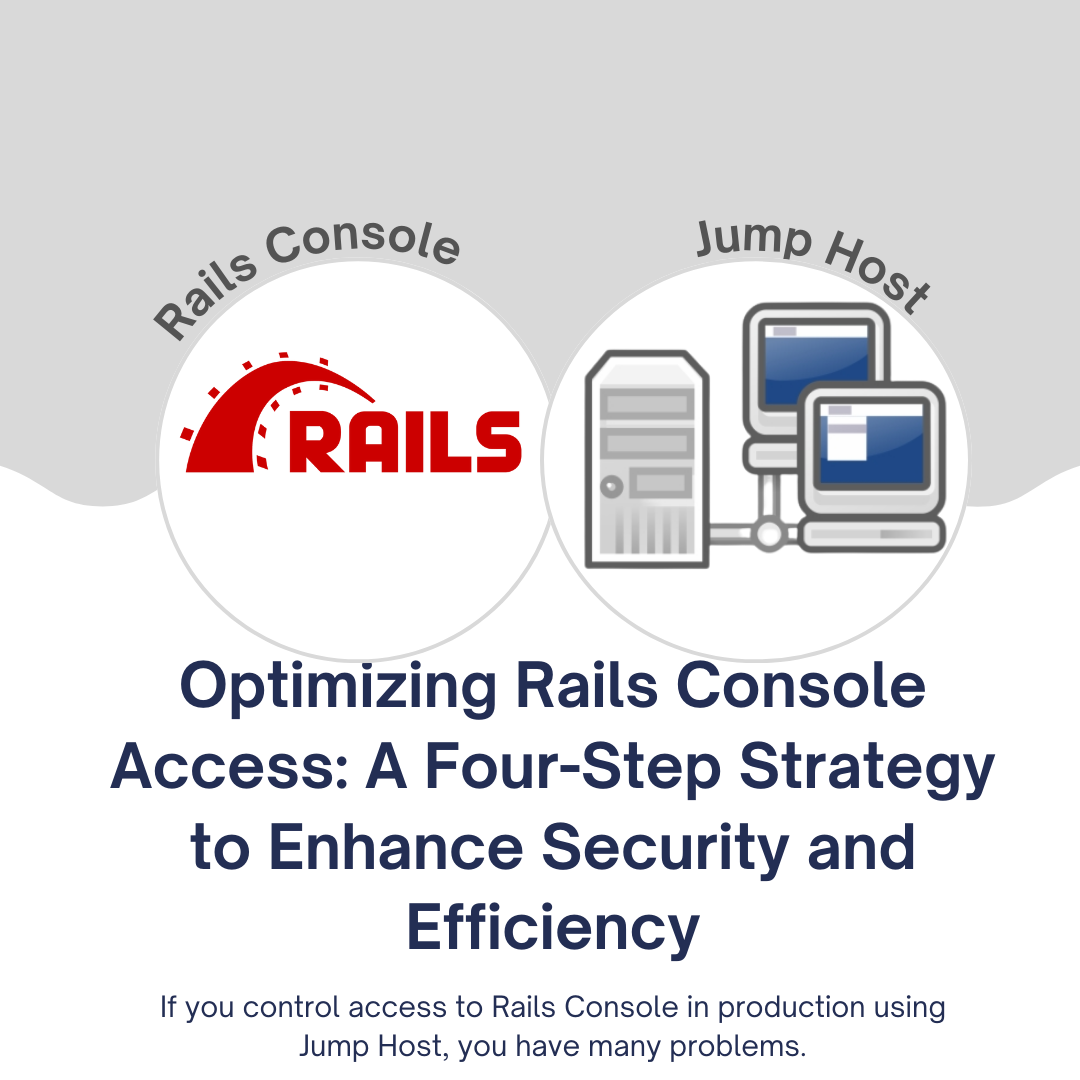Optimizing Rails Console Access: A Four-Step Strategy to Enhance Security and Efficiency

In today's fast-paced tech world, having quick and efficient access to the Rails Console in a production environment is crucial for maintaining product speed and ensuring rapid troubleshooting, bug fixes, and incident resolutions. However, many organizations grapple with the challenge of providing secure and efficient access. This article delves into the five most significant problems associated with controlling access to Rails Console through a Jump Host, examines the impacts they create, and suggests practical solutions to mitigate these challenges.
The Hidden Vulnerabilities of Jump Host Access
Before we delve into the solutions, let's understand the five biggest issues with using Jump Host for Rails Console access:
1. Security Risks
Granting access through a Jump Host can introduce significant security risks, potentially exposing your business to vulnerabilities and data breaches.
2. Inefficient Workflows
Inefficient access management workflows can lead to productivity bottlenecks, delaying critical tasks such as troubleshooting and incident resolution.
3. Missing Components
Jump Host-based access often lacks essential components, including Single Sign-On (SSO), Multi-Factor Authentication (MFA), audit trials, and Personally Identifiable Information (PII) protection.
4. Compliance Challenges
Meeting industry-specific compliance standards, such as GDPR, PCI, SOC2, and HIPPA, can be challenging when using Jump Host access methods.
5. Developer Experience
The developer experience may suffer when cumbersome access methods hinder productivity and discourage efficient use of the Rails Console.
Simplifying Rails Console Access - The 80/20 Rule
Now that we've identified the key issues, let's explore four steps to address them effectively:
1. Add Rails Console to Existing Systems
Integrating Rails Console into systems you already manage can simplify the process. For instance:
- If you're using Google Workspaces, you don't necessarily need a separate LDAP directory.
- Incorporating SSO into SSH can be challenging, so consider using tools like AWS/Google Cloud's Cloud Shell solutions or Runops for assistance.
- Start with Google OAuth for SSO and MFA rather than embarking on a full LDAP project.
Remember, it's more efficient to have one tool that solves 80% of the problem than several tools addressing only 20% each.
2. Prioritize Features for Your Industry
Consider your industry-specific needs when implementing Rails Console access features:
- If your focus is on developer experience and rapid access, prioritize SSO and MFA.
- Highly regulated industries should focus on security, compliance, and audit features.
- Streamline the access process to minimize the number of steps required for entry.
Tailor your approach to suit your industry's requirements and constraints.
3. Leverage Comprehensive Solutions
To reduce complexity, seek solutions that address multiple access needs, not just Rails Console:
- Managing multiple tools for various access points can be overwhelming. Look for tools like Runops that manage cloud provider access alongside Rails Console.
- Even if a tool offers a slightly worse user experience for some tasks, consolidating access management within a single tool can streamline your workflow.
Simplify your toolset to enhance efficiency and productivity.
4. Add Friction to Unwanted Access Methods
Sometimes, it's necessary to discourage the use of insecure access methods:
- If an insecure method is currently the fastest, consider adding a form submission step to incentivize using the preferred secure method.
- Introduce hurdles to unwanted access, such as requiring a Jira request to access the Rails Console.
- Over time, improve the preferred access method to make it more convenient than the insecure alternatives.
While this approach may not be ideal, it can serve as a temporary measure to protect your infrastructure until a better solution is in place.
Conclusion
Controlling Rails Console access through a Jump Host can be challenging, but by identifying and addressing these five major problems, you can significantly enhance your security, efficiency, and developer experience. Prioritize your approach based on industry needs, leverage comprehensive solutions, and consider temporary measures to discourage insecure access methods. By following these four steps, you can streamline your Rails Console access management and ensure your organization is better prepared for the demands of a fast-paced production environment.
